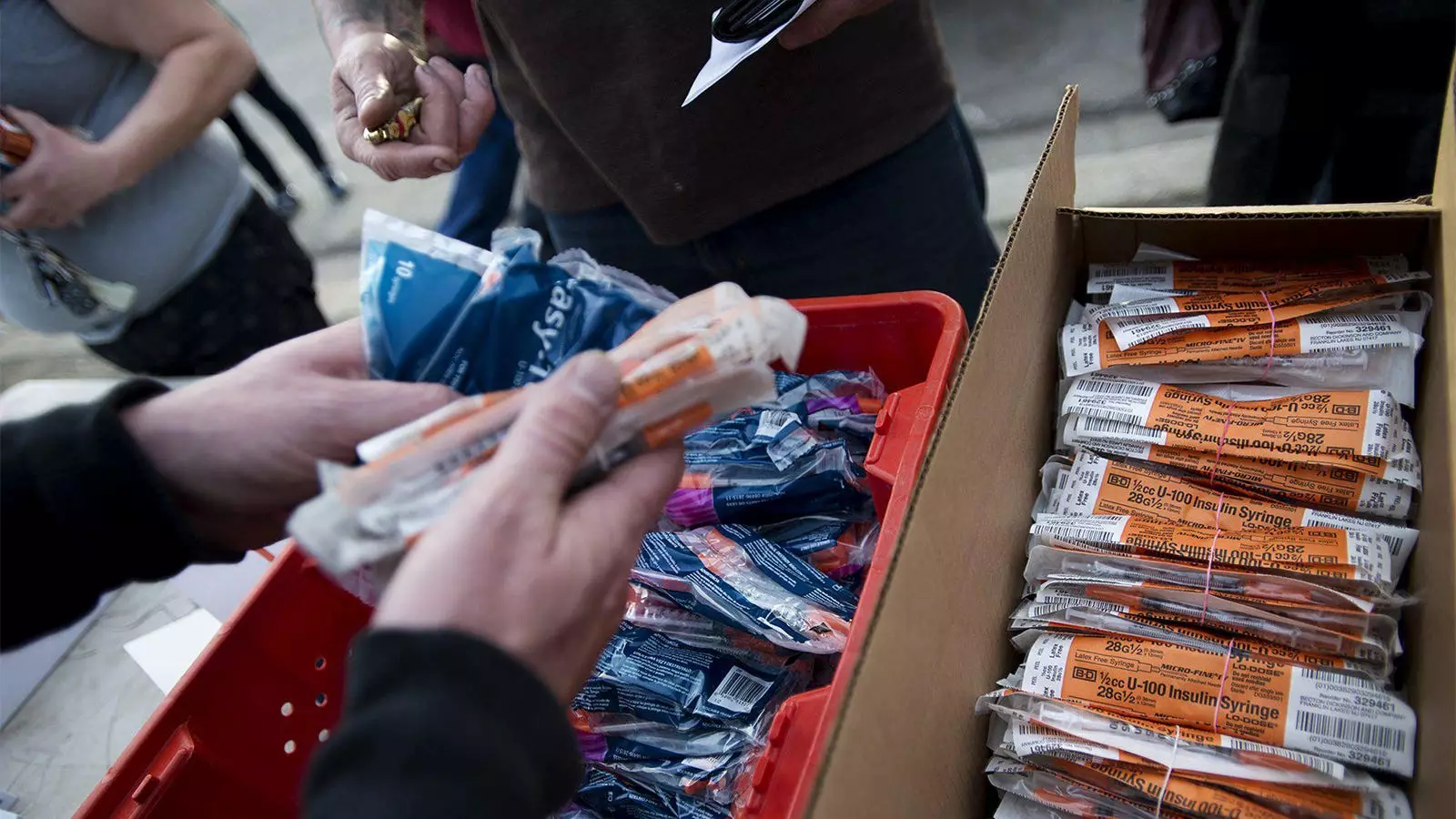With drug-related overdoses and HIV outbreaks on the rise in West Virginia, the importance of needle exchange programs cannot be overstated. These programs, also known as syringe services programs, offer a harm reduction approach by providing clean and sterile injecting equipment to individuals who use drugs. While some may view these programs as radical, the reality is that people will continue to inject drugs regardless of access to clean equipment. Harm reduction recognizes this fact and aims to minimize the negative consequences of drug use. Despite their proven effectiveness in reducing the transmission of viral infections and connecting individuals to vital services, needle exchange programs still face significant criticism. West Virginia House Bill 4866, for example, seeks to ban needle exchange programs in the state. In this article, we will explore the crucial role these programs play in harm reduction and debunk common misconceptions surrounding them.
A Comprehensive Approach to Care
Needle exchange programs go beyond simply providing clean injecting equipment. As someone who has worked at multiple programs in California, I have witnessed firsthand the array of services these programs offer. Apart from HIV and hepatitis C testing, they provide essential healthcare services, mental and behavioral health support, naloxone distribution for overdose prevention, social services, and housing assistance. Additionally, needle exchange programs serve as distribution centers for vital vaccines like influenza and hepatitis A and B. These programs also extend their reach to populations beyond those who use drugs, such as people experiencing homelessness. By providing these comprehensive services, needle exchange programs create a trusted environment where individuals can seek help and, if they wish, access substance use treatment and counseling.
Drug use rates in the United States have been steadily increasing. In 2022 alone, over 5.3 million people used cocaine, 2.7 million used methamphetamine, and 1 million people used heroin. Furthermore, an estimated 3.5 million people injected drugs in 2018, representing a worrisome upward trend. Given the associated harms, including overdose, it is imperative that we meet people where they are and provide non-judgmental strategies and resources to minimize these harms. By building trust and offering autonomy, individuals can make informed decisions about their drug use without feeling stigmatized.
The Core Purpose of Needle Exchange Programs
Contrary to popular belief, needle exchange programs do not encourage or increase drug use, crime, or needle litter. Decades of research have debunked these claims. Instead, the primary objective of these programs is to provide safe injection equipment. By preventing the sharing and reuse of needles, needle exchange programs effectively reduce the transmission of blood-to-blood viral infections like HIV and hepatitis C. Additionally, these programs play a vital role in preventing bacterial skin infections such as Staphylococcus aureus, which can have severe consequences in the absence of the right resources.
Over 30 years of data support the cost-effectiveness and safety of needle exchange programs. Numerous studies have shown that these programs not only prevent HIV, hepatitis C, and other infections but also reduce drug-related overdoses. Contrary to concerns, needle exchange programs have been found to be cost-effective, as they minimize the burden on healthcare systems by preventing expensive long-term treatments of infectious diseases. Furthermore, cities with needle exchange sites are more likely to practice proper needle disposal, debunking the misconception that these programs contribute to needle litter.
It is crucial to recognize the complexity of drug use. Many individuals turn to drugs as a way to cope with trauma, daily life challenges, experiences with homelessness, historical oppression, income inequality, or their environment. Criminalizing drug use and the services that support those who use drugs does not resolve the underlying issues. Instead, policymakers, community advocates, and healthcare workers should collaborate with community organizations and individuals with lived experiences of drug use to develop programs that best meet the needs of the community.
Rethinking Policies and Prioritizing Community Needs
For states like West Virginia, where drug-related overdoses are prevalent, it is essential to reconsider policies that limit or eliminate access to needle exchange programs. The benefits and costs of these programs overwhelmingly favor their continuation. Policymakers must work closely with healthcare providers, community organizations, and individuals with lived experiences to design programs that address the specific needs of the community. By prioritizing harm reduction strategies like needle exchange programs, we can make significant progress in reducing the devastating consequences of drug use.
Needle exchange programs play a crucial role in harm reduction. They provide essential services beyond clean injecting equipment, creating a trusted space where individuals who use drugs can access healthcare, support, and resources. Despite misconceptions, needle exchange programs have been proven to be safe, cost-effective, and effective in preventing the transmission of viral infections and drug-related overdoses. Rather than criminalizing drug use, it is imperative that we prioritize harm reduction strategies and work collaboratively to develop programs that meet the unique needs of each community. Only by doing so can we address the complex issue of drug use and minimize its associated harms.


Leave a Reply